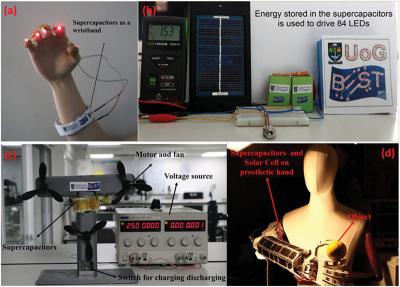Researchers at the University of Glasgow in Scotland have developed an electronic skin that can generate and store electricity for prosthetic devices.

The technology consists of layers of a finely tuned graphite-polyurethane composite covered by graphene. The team explained that the graphite-polyurethane works as an electric supercapacitor, storing energy that can be used at any time by a prosthetic. The graphene component is said to essentially be a solar panel that converts sunlight to electricity to charge the supercapacitor.
The Glasgow team reportedly conducted a series of experiments using their power system, including lighting 84 bright LEDs and running high-torque motors of a prosthetic hand.
The fabricated supercapacitors (SCs) reportedly yielded a stable response for more than 15,000 charging/discharging cycles at current densities of 10 mA cm−2 and operating voltage of 2.5 V. The developed SCs are tested as energy storage devices for wide applications, like solar powered energy packs to operate 84 light emitting diodes (LEDs) for more than a minute and to drive the actuators of a prosthetic limb, for powering high torque motors and for wearable sensors.

